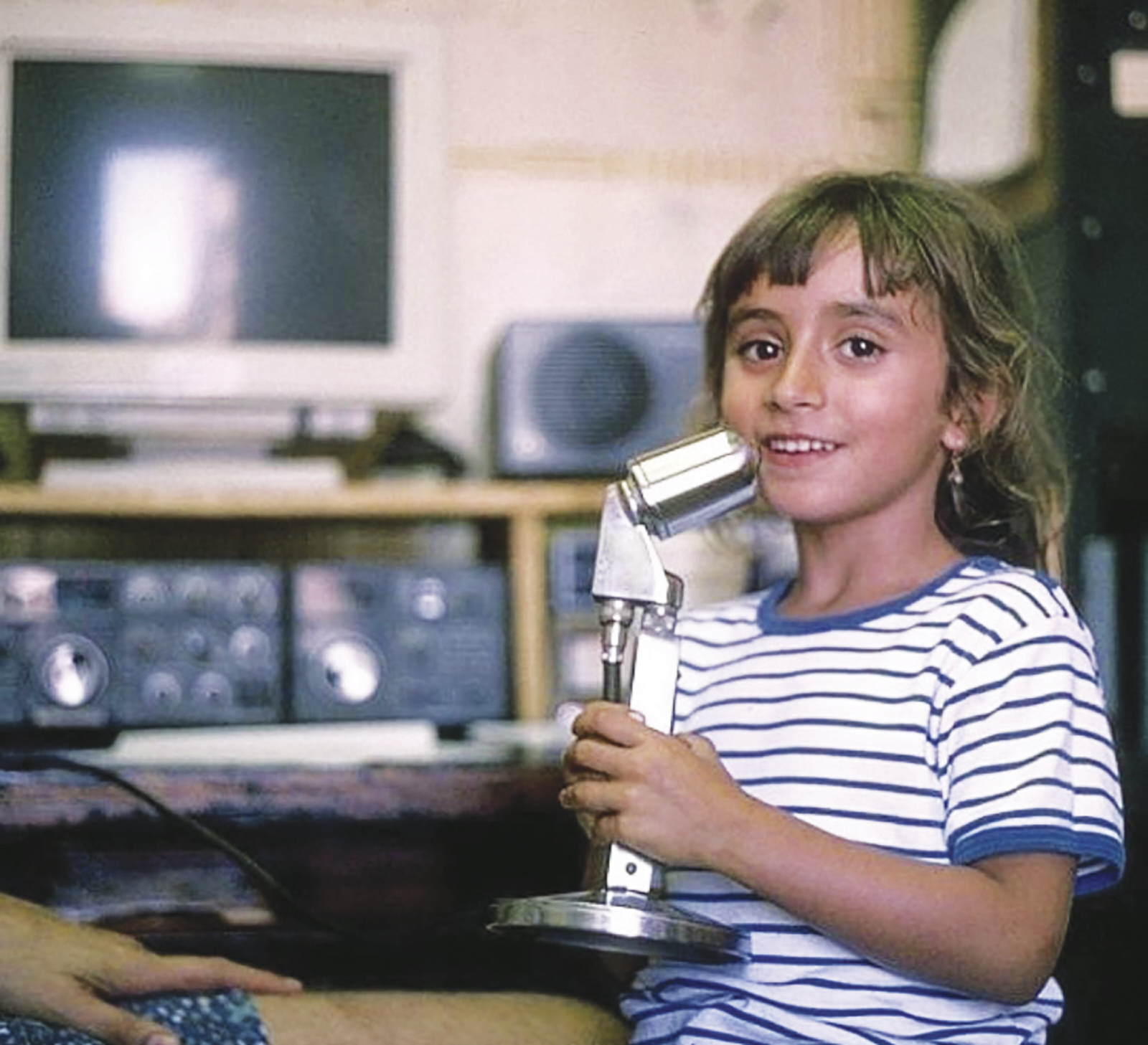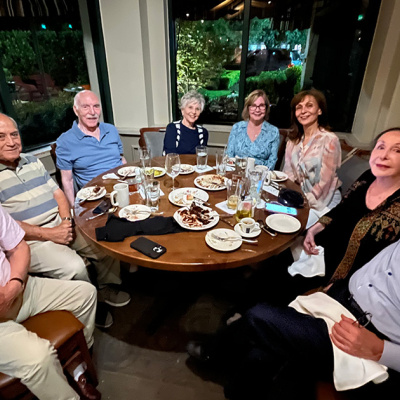A Longhorn Astrophysicist Looks to the Stars

Austin native Sarafina El-Badry Nance has been enamored with the night sky since she was a child. She would stargaze with her dad on most nights and listen to StarDate Radio, a science program out of UT’s McDonald Observatory, with her mom during car rides to and from school. She took her first astronomy class in high school, and by her senior year had chosen an independent study on dark energy and supernovae over another standard science class.
“I fell in love with astrophysics because of the perspective it offers us,” El-Badry Nance says. “How small we are, and how little our day-to-day matters in the context of the universe.”
After high school, El-Badry Nance stayed local, before leaving UT in 2016 with degrees in both physics and astronomy. Now located in the Bay Area, she’s a National Science Foundation graduate research fellow and is currently working toward her doctorate from the University of California, Berkeley at its Lawrence Berkeley National Laboratory (LBNL). Her focus expands far beyond what is visible to the naked eye.
And outside the classroom and research labs, El-Badry Nance is a rising internet star, amassing over a hundred thousand Twitter followers (@starstrickenSF), and becoming a prominent voice for science communication on what’s known as “Science Twitter.” El-Badry Nance is the host of a new web show, Constellations, which debuted on a digital media platform called Seeker in early 2021. She wrote a children’s book titled Little Leonardo’s Fascinating World of Astronomy, a companion to the Little Leonardo’s Fascinating World series named for Leonardo da Vinci, featuring basic concepts about what astronomers do, and all things space, slated for release in August. Her memoir, Starstruck, was acquired by Dutton, an imprint of Penguin Random House, in April. Just 28 years old, the sky is the limit for El-Badry Nance.

The constellation known as Orion the Hunter is one of the most recognizable patterns in the night sky, easily identified by the three stars in a row that make up Orion’s Belt. But recently the giant red star Betelgeuse, which is part of the hunter’s right shoulder, is the dimmest it’s been in nearly a century, prompting speculation that the star will soon explode and become a supernova. El-Badry Nance studies Betelgeuse so she can build models of the explosions of supernovae in their final stages.
“I think they’re some of the most fascinating components of the universe,” El-Badry Nance says. “They offer incredible opportunities to learn about its composition and fate.”
The Center for Computational Cosmology at the LBNL, run by her doctoral advisor, Peter Nugent, is where she creates her models of what’s known as Type II supernovae, such as Betelgeuse.
“When stars like that explode, they get really bright, almost as bright as a galaxy filled with billions of stars,” Nugent says. “And they hang out at that brightness for months, so they’re easy to spot.”
El-Badry Nance has been using new techniques pioneered by Nugent and others to measure the distance between supernovae. The work is vital to cosmology as a whole, because when scientists measure the distances between them, they can calculate how fast the universe is expanding—a measurement called the Hubble Constant—which is one of the big uncertainties in cosmology today.
“Sarafina’s contribution [to the field] is going to more than double the total number of supernovae of this type that have been used to measure distances,” Nugent says. “And she’s going to be applying new techniques to these measurements so that we can make them even more precise.”
El-Badry Nance isn’t just unique in the way she straddles the theoretical and the observational sides of the science, something not many astrophysicists in the field do today. She knows how to distill and translate her enthusiasm and knowledge to the broader public.
“She attended a meeting in Ohio for all the National Lab directors,” Nugent says, “where we were explaining what we do to local schools and how high school students could get involved, and she just absolutely loved tweeting about it left and right.”
One of El-Badry Nance’s astronomy peers who became familiar with both her scientific work and influence on social media is Emily Levesque, an astronomer and associate professor at the University of Washington.
“I work on a different type of supernovae than the kinds we use to study the expanding universe,” Levesque says, “but Sarafina takes a holistic approach I really like to see in researchers today, which is using all the different tools at her disposal to understand supernovae.”
As important as her research is, it’s perhaps her non-academic work that has garnered her the most widespread attention. For El-Badry Nance, the most prominent focus outside of research is on breast cancer, which came to the forefront of her life in her early 20s.
When she was first diagnosed with the cancer-causing BRCA gene mutation in 2017, she felt debilitated. Various studies give women with the gene up to an 87 percent lifetime risk of breast cancer and 30 percent lifetime risk of ovarian cancer, as well as increased risks in other associated cancers like pancreatic and melanoma. As a result, she made the unwelcome decision to have a preventative double mastectomy at the age of 26.
El-Badry Nance found that being trained as a scientist directly informed her ability to make momentous decisions about her health—from understanding what it means to have a genetic mutation and what percentages of risk mean, to researching various medical journals to learn more about treatments and options.
Perhaps just as notable as the decision to undergo the surgery was her willingness to be open with the decision to her growing legion of followers online. In 2019, she wrote a story for the San Francisco Chronicle about the decision to have a double mastectomy, noting that she hopes to help close the education gap and save other women’s lives.
“I’ve often reflected on the fact that I have so much privilege in navigating this space,” El-Badry Nance says. “For a lot of reasons, but one is that because I’m a trained researcher, I know how to ask questions and think analytically when going through medical journals and other publications.”
With her health scare in the rearview mirror, El-Badry Nance has been focused on bringing the strange wonders of the cosmos to the rest of the world. Whether it’s adding to the body of knowledge in her field of exploding stars like Betelgeuse or publishing accessible videos about constellations, she hopes to increase science literacy around the world.
“It’s our duty as scientists to share with the world what we have learned,” El-Badry Nance says. “In the era of anti-science, it’s paramount for scientists to find ways of communicating with the public that breach the divides.”
Header image by Behzod Sirjani; archival image courtesy of Sarafina El-Badry Nance






